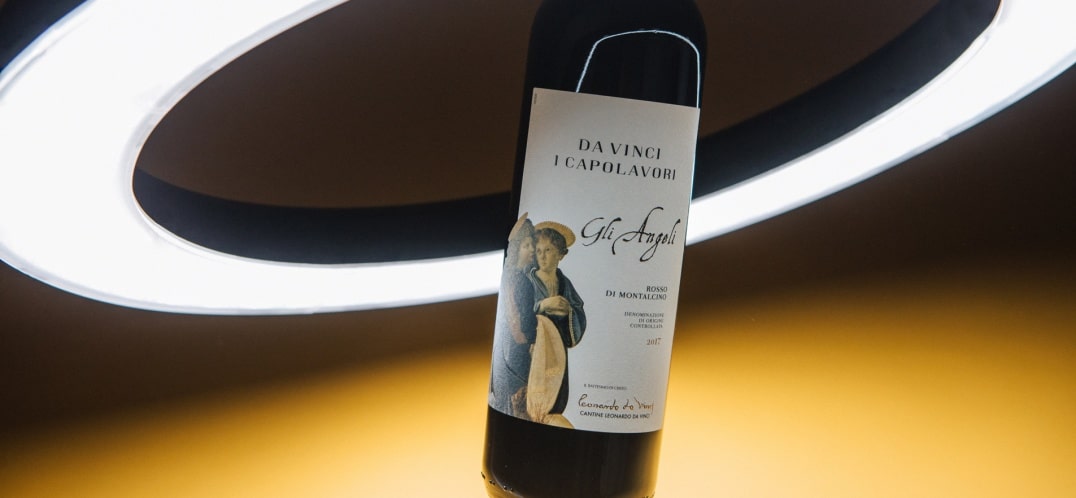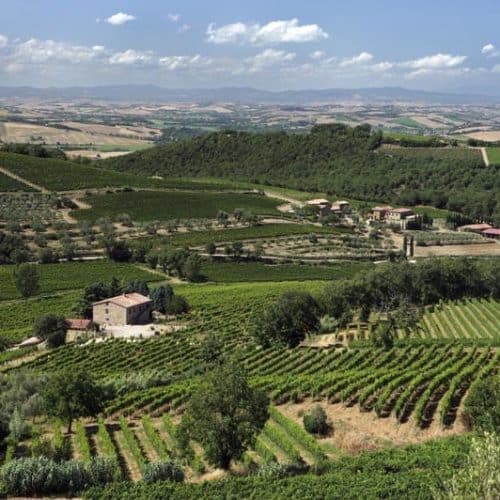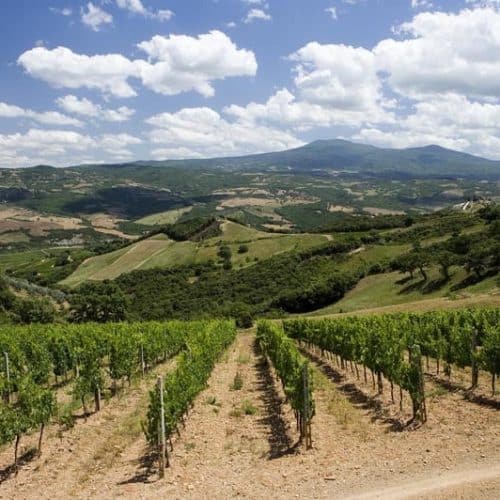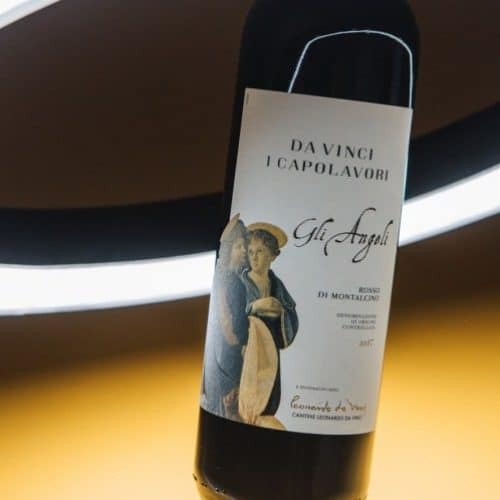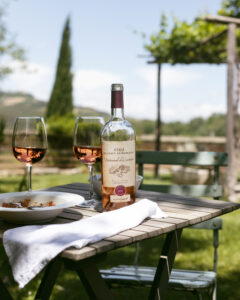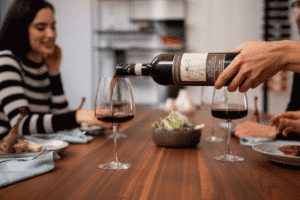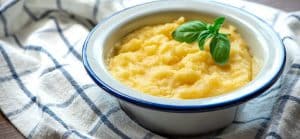Montalcino is a delightful medieval village south of Siena, in the beautiful Val d’Orcia. Considered an “oenological cradle”, the Montalcino area is famous all over the world thanks to its most important and delicious product: wine.
We are in the Sienese hills, a well-ventilated and bright area, where the climate is mild and the summers are long and dry. Due to the favorable geological and climatic characteristics, it is particularly suitable for growing vines.
The producers of this area obtain two different wines with controlled denomination of origin from the same Sangiovese vineyards: Brunello di Montalcino and Rosso di Montalcino. The differences between Brunello and Rosso di Montalcino are that the former is intended for long aging, while the latter, younger, is appreciated for its particular freshness and liveliness. It is for this reason too that we sometimes use the term “young” Brunello to refer to Rosso di Montalcino. What is certain is that both wines represent a Tuscan excellence that is well known and loved all over the world.
Rosso di Montalcino is a ready-to-drink wine, with a clear, harmonious and fragrant color. It must be bottled in Bordeaux-shaped bottles.
Cantine Leonardo da Vinci has included Rosso di Montalcino in two collections: that of ‘Da Vinci I Capolavori’ and in the ‘Leonardo da Vinci’ collection. Rosso di Montalcino prices usually do not exceed 15 euros per bottle.
The Da Vinci I Capolavori collection combines a work of art with each enological denomination and, in the case of Rosso di Montalcino, the label shows the painting of Leonardo’s Angels.
Rosso di Montalcino Leonardo da Vinci is obtained from Sangiovese grapes harvested in the hills of Vinci and Cerreto Guidi. The nose is very fine and enveloping with a clear hint of cherry and red fruits that give way to a spicy finish. On the palate, it is intense with a long persistence, with a good balance between the various components.
This wine lends itself to multiple combinations because of its freshness and harmony, however it is ideal when coupled with traditional Tuscan cuisine – including the more rustic and rural dishes of the peasant tradition, such as pasta and meat-based dishes, roast pork or poultry, and even steaks. It is also perfect for lighter, vegetable-based dishes, obtained from garden produce, such as legumes and cereals.
